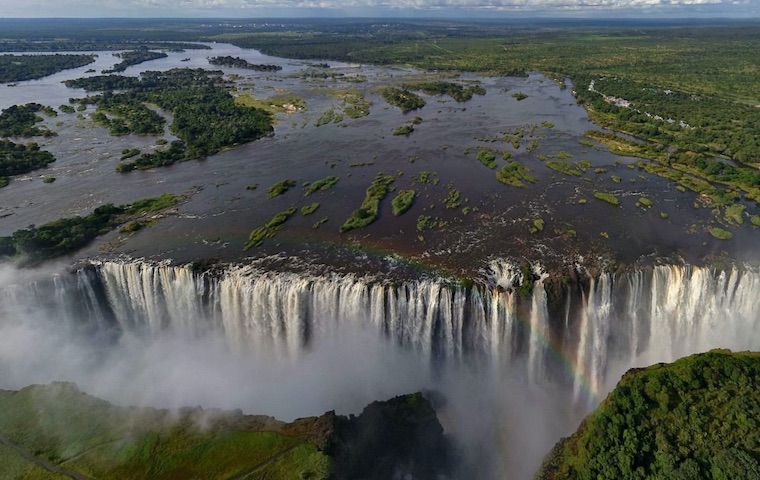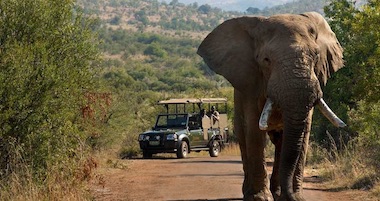TANZANIA TARANGIRE NATIONAL PARK
Tanzania’s Tarangire National Park, located in the Manyara Region, is one of the country’s most spectacular natural attractions. Spanning approximately 2,850 square kilometres, it is the sixth-largest national park in Tanzania and an essential component of the northern safari circuit. Known for its vast landscapes, iconic baobab trees, and abundant wildlife, Tarangire offers visitors a unique and unforgettable experience.
A Brief History of Tarangire National Park
Established in 1970, Tarangire National Park was named after the Tarangire River, which runs through its heart. This river is a lifeline for the park’s ecosystem, especially during the dry season when it becomes the primary water source for many animals. The park was originally set aside to protect the area’s wildlife and habitats, ensuring that future generations enjoy its unspoiled beauty. Today, it plays a critical role in Tanzania’s conservation efforts and eco-tourism industry.
Geography and Landscape
One of Tarangire’s defining features is its diverse landscape. The park is characterized by rolling savannahs, swamps, acacia woodlands, and the iconic baobab trees, which dot the landscape like sentinels of time. These ancient trees, often called the “Tree of Life,” store water in their massive trunks and shelter various species, including birds, insects, and bats. The Tarangire River meanders through the park, creating a ribbon of life amid the dry terrain. During the rainy season, the surrounding plains come alive with lush vegetation, while the dry season reveals a more arid, golden-hued landscape. This geographical diversity supports a wide array of flora and fauna, making the park a biodiversity hotspot.
Wildlife Abundance
One of Tarangire’s biggest draws is its impressive concentration of wildlife. The park is renowned for its large elephant herds, sometimes numbering in the hundreds. These majestic creatures are a highlight for visitors and an essential part of the park’s ecosystem. In addition to elephants, Tarangire is home to various animals, including lions, leopards, cheetahs, zebras, giraffes, buffaloes, and wildebeests. The park is also excellent for spotting lesser-known species such as oryx, gerenuks, and dwarf mongoose. Tarangire is a birdwatcher’s paradise, boasting over 500 bird species. Highlights include the yellow-collared lovebird, Kori bustard, and the peculiar-looking southern ground hornbill. The park’s wetlands amps are particularly rich in birdlife, attracting migratory species during certain times of the year.
Seasonal Variations and Migration
Seasonal variations heavily influence the wildlife dynamics in Tarangire. During the dry season, from June to October, the park becomes a magnet for animals as they converge on the Tarangire River and the remaining waterholes. This period offers exceptional game-viewing opportunities, as predators and prey share the same limited resources. In contrast, from November to May, the rainy season sees animals dispersing across the wider ecosystem. Although wildlife concentrations may decrease during this period, it offers lush scenery, fewer tourists, and opportunities to witness newborn animals.
Conservation Efforts
Tarangire National Park is part of a larger conservation area that includes community-managed wildlife corridors and adjacent reserves. These corridors are vital for animal migrations and genetic diversity. The park’s management works closely with local communities to promote sustainable practices, reduce human-wildlife conflict, and support conservation initiatives. Eco-tourism plays a significant role in funding conservation efforts in Tarangire. Visitors’ park fees contribute to wildlife protection, habitat restoration, and anti-poaching activities. Additionally, several lodges and camps within the park are committed to environmentally friendly operations, further enhancing conservation outcomes.
Cultural Connections
The area surrounding Tarangire National Park is home to several indigenous communities, including the Maasai and the Barabaig. These groups have lived in harmony with nature for centuries and have a deep understanding of the land and its wildlife. Visitors to Tarangire have the opportunity to engage with local communities through cultural tours and experiences. These interactions provide insight into traditional practices, such as cattle herding, beadwork, and storytelling, while also fostering mutual respect and understanding.
Activities in Tarangire National Park
Tarangire offers a wide range of activities for visitors, catering to both adventure seekers and those looking for a more relaxed experience:
- Game Drives: Morning and evening game drives are the most popular way to explore the park. Visitors can traverse the vast landscapes in search of the “Big Five” and other wildlife.
- Bird Watching: With its rich avian diversity, Tarangire is a haven for bird enthusiasts. Binoculars are in hand, and visitors can spot resident and migratory species.
- Guided Walking Safaris: These safaris provide an intimate way to connect with nature. Led by experienced guides, walking safaris allow visitors to observe wildlife tracks, plant species, and smaller animals up close.
- Cultural Tours: Interactions with the Maasai and other local communities offer a deeper understanding of the region’s cultural heritage.
- Night Game Drives: Some lodges offer night drives, where visitors can spot nocturnal species such as bush babies, owls, and genets.
- Photographic Safaris: Tarangire is a dream destination for photographers with its dramatic landscapes and diverse wildlife. Many operators offer specialized photographic tours.
Accommodations
Tarangire National Park offers a variety of accommodations to suit different budgets and preferences. From luxury lodges and tented camps to budget-friendly campsites, visitors have plenty of options. Many of these accommodations are strategically located to provide stunning views of the park’s landscapes and wildlife.
Some popular options include:
- - Tarangire Treetops: A luxury lodge offering elevated treehouse-style accommodations.
- - Oliver’s Camp: known for its intimate and authentic safari experience.
- - Tarangire Safari Lodge: A family-friendly lodge with spectacular views of the Tarangire River.
Practical Information for Visitors
- - Best Time to Visit: The dry season (June to October) is ideal for wildlife viewing, while the rainy season (November to May) offers lush landscapes and fewer crowds.
- - How to Get There: The park is approximately 120 kilometres southwest of Arusha and can be reached by road or air. Several domestic flights connect Arusha to nearby airstrips.
- - Park Fees: Visitors must pay park entry fees, which vary for international tourists, East African residents, and Tanzanian citizens
- - What to Pack: Essentials include comfortable clothing, sturdy footwear, sunscreen, insect repellent, binoculars, and a camera.
Tarangire National Park is a true gem in Tanzania’s crown of natural wonders. Its unique landscapes, abundant wildlife, and cultural richness make it a must-visit destination for nature lovers and adventure seekers alike. Whether it’s witnessing the majestic elephant herds, marvelling at the ancient baobab trees, or connecting with local communities, Tarangire offers a transformative and unforgettable experience. As one of Africa’s premier safari destinations, it continues to inspire awe and wonder in all who visit.
Today's Top Deals
-

Most Popular
Victoria Falls & Chobe Fly-in Safari
5-Day Victoria Falls & Chobe Fly-in Safari Adventure
-

Most Popular
Sun City South Africa
5 Day-SUN CITY - NORTH WEST Including Pilanesberg NP
-

Most Popular
Okavango Delta Horse Safari
10-Day Okavango Horse Safari
Need Assistance?
We are located in Perth City, WA I`m happy to meet up and help with your booking issues and answer any related questions on Africa





 Smart Traveller
Smart Traveller